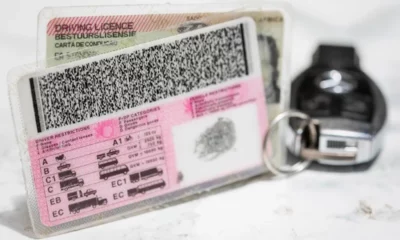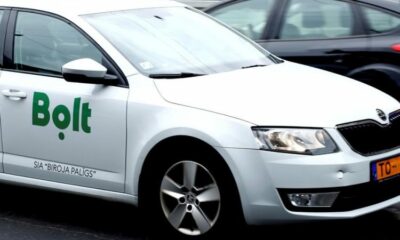Business
New E-Hailing Rules Limit Drivers to Their Provinces, What It Means for Passengers and Operators

South Africans who rely on Uber, Bolt, and other e-hailing services should brace for big changes. From Friday, new government regulations will officially come into effect, reshaping how drivers operate across the country.
The Department of Transport says the rules are designed to improve safety, raise service standards, and reduce tension between e-hailing drivers and the traditional taxi industry, a rivalry that has, at times, turned violent.
What the New Rules Say
According to Department spokesperson Collen Msibi, the changes are sweeping:
-
Operating licenses required: Every driver must hold an official e-hailing operating license, even if they previously used charter or metered taxi permits.
-
Jurisdiction limits: Drivers can only pick up and drop off passengers in their assigned province. For example, a driver who collects a client in Limpopo must drop them there and return home empty, rather than waiting for another trip.
-
Vehicle branding: All e-hailing cars must carry official branding so they can be clearly identified.
-
Safety features: Cars must be fitted with panic buttons to protect both drivers and riders.
Failure to comply could carry serious consequences. Using an unregistered app or driving without the right license may lead to fines of up to R100,000 or even jail time of up to three years.
Why the Changes?
At the heart of the new rules is the long-standing conflict between e-hailing drivers and traditional minibus taxis. Since services like Uber and Bolt launched locally nearly a decade ago, taxi associations have accused them of poaching customers and undercutting prices. In some areas, disputes have escalated into violence, leaving both passengers and drivers vulnerable.
By confining drivers to their provincial jurisdictions, government hopes to prevent “roaming” when drivers linger outside their areas to compete with local operators.
What It Means for Drivers
For many drivers, the new system is more than just paperwork. In provinces like KwaZulu-Natal, which never had an interim permit system, operators will essentially need to start from scratch. Others will have to convert their existing taxi or charter permits into the new e-hailing license.
Some fear this will lead to extra red tape and costs in an industry already squeezed by rising petrol prices, platform commission fees, and mounting competition.
Public Reaction
The announcement has sparked mixed feelings. On social media, some passengers welcomed the introduction of panic buttons and visible branding, saying it could deter criminals who impersonate e-hailing drivers.
But others questioned how jurisdiction limits will work in practice. “What happens if I book a ride from Joburg to Pretoria? Will the driver be fined halfway?” one X user asked.
South Africa isn’t the first country to tighten control over ride-hailing platforms. Cities around the world, from London to Nairobi, have introduced licensing and safety requirements as governments try to catch up with fast-moving tech.
The new rules may bring order, but they could also make cross-provincial travel less convenient and more expensive for passengers. For drivers, the regulations are a reminder that while e-hailing offered freedom when it first arrived, it is now firmly part of South Africa’s regulated transport system.
{Source: IOL}
Follow Joburg ETC on Facebook, Twitter , TikTok and Instagram
For more News in Johannesburg, visit joburgetc.com



























